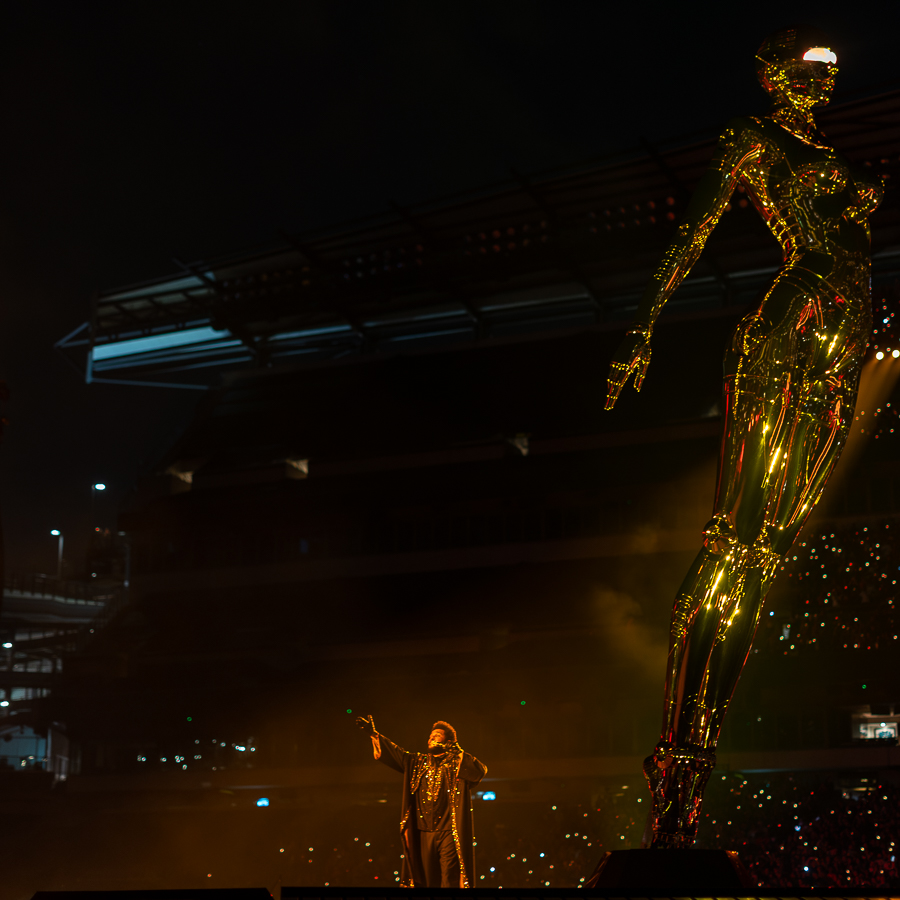The Weeknd transforms Philadelphia into a futuristic dreamscape
This Thursday, The Weeknd performed at Lincoln Financial Field in Philadelphia for the second consecutive night. Abel Makkonen Tesfaye delivered an extensive show that combined cinematic production with direct connection to the audience.
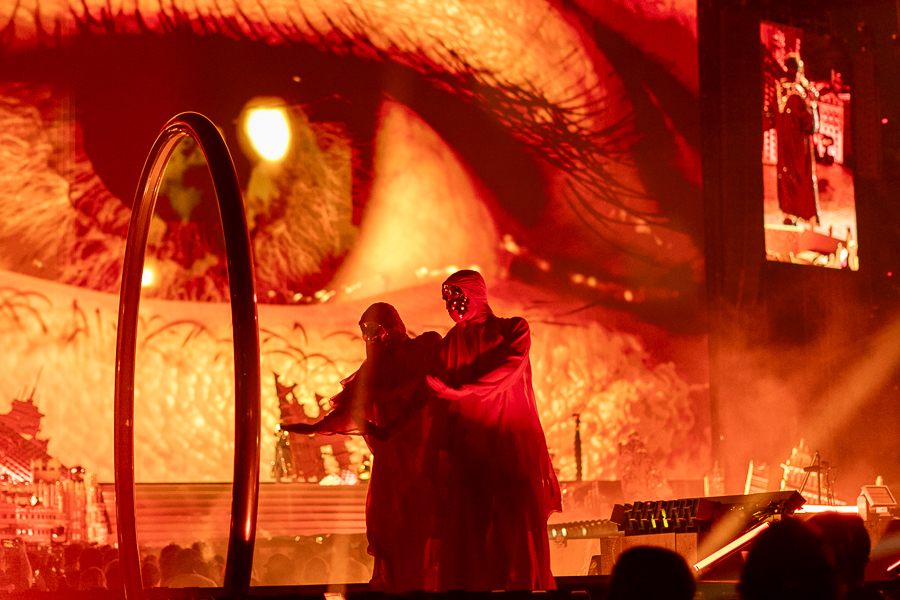
The stage carried the same signature as his 2022 tour, featuring a Toronto skyline backdrop with the iconic CN Tower prominently displayed, a reference to his hometown. A large staircase led from the main stage to a catwalk runway nearly the length of a football field. On the opposite side of the main stage stood a second, smaller stage. Shorter side catwalks formed loops, creating a cross-shaped layout when viewed from above. At the end of the walkway stood an imposing female robot statue by Hajime Sorayama, reinforcing the show’s futuristic atmosphere. Behind the main stage hung a large screen that alternated between background visuals and live footage of the artist.
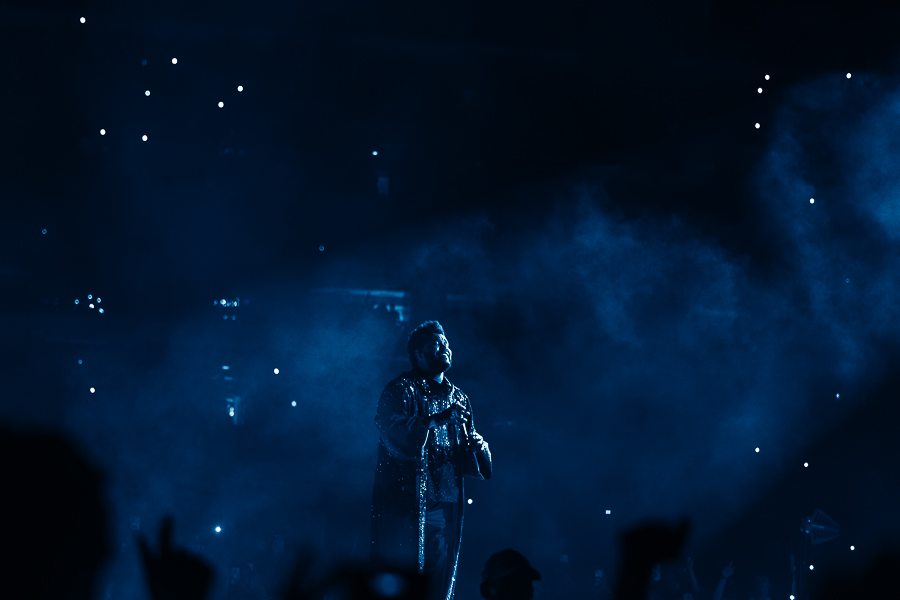
The Weeknd appeared in a gold-and-black cloak and metallic mask, opening with “The Abyss” from his album “Hurry Up Tomorrow.” Masked dancers in red cloaks moved with stylised choreography around the stage. After “Wake Me Up” and “After Hours” from his 2020 album of the same name, The Weeknd removed his mask and revealed a broad smile.
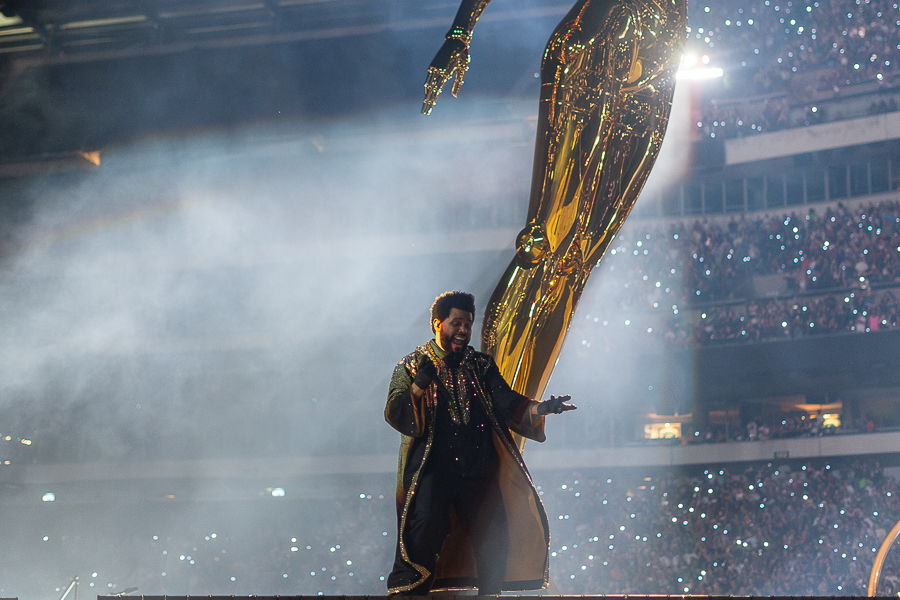
The performance continued with “Starboy” from 2016, followed by “Heartless.” Although his music is often dark and melancholic, The Weeknd radiated warmth and joy on stage. During “Take My Breath,” he walked energetically across the runway, blending his characteristic aesthetic with charisma.
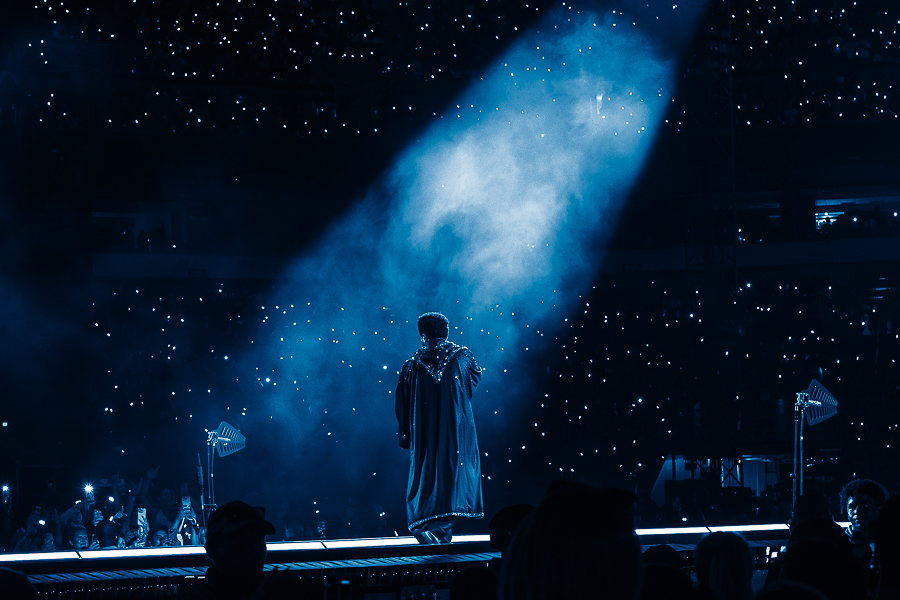
On the B-stage, he delivered a strong version of “Can’t Feel My Face” from “Beauty Behind the Madness,” with his vocals surpassing the studio version. His connection with the audience was noticeable during “Lost in the Fire” and “Kiss Land” from his 2013 debut album.
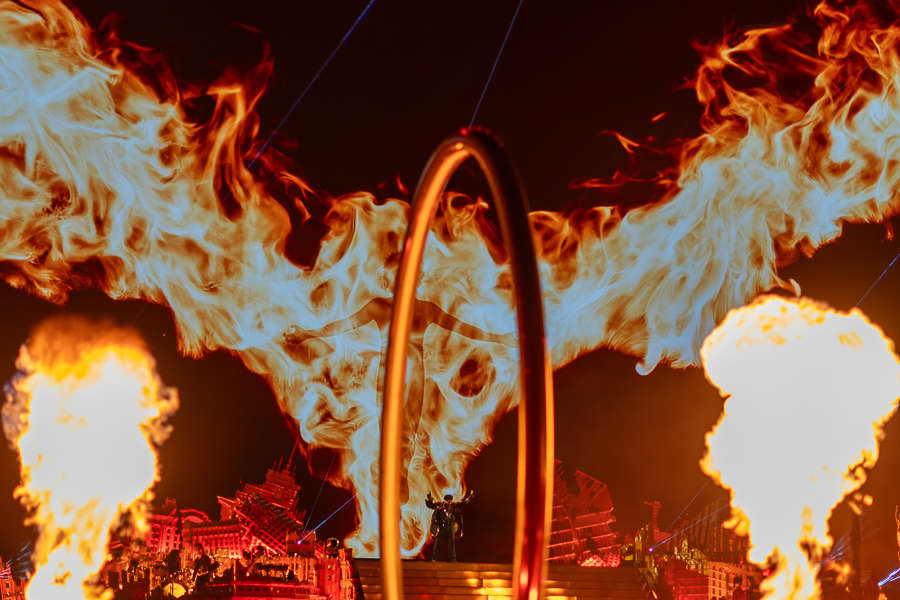
The production was characterised by wristbands that lit up the stadium in various colours, supported by an extensive lighting design. The Hajime Sorayama statue rotated on stage and added a futuristic dimension. The transitions between songs like “Often” and “Given Up on Me” were seamless, with red and blue lights moving throughout the venue.
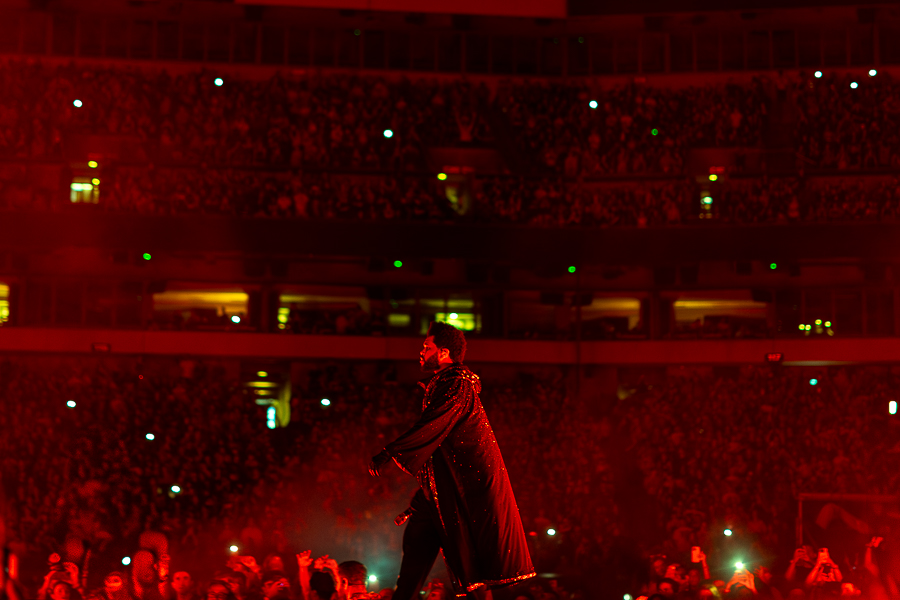
Playboi Carti, who had provided the opening act alongside Mike Dean, joined The Weeknd for their collaborations “Timeless” and “RATHER LIE.” The rapper brought additional energy to the stage during these duets, re-energising the crowd.
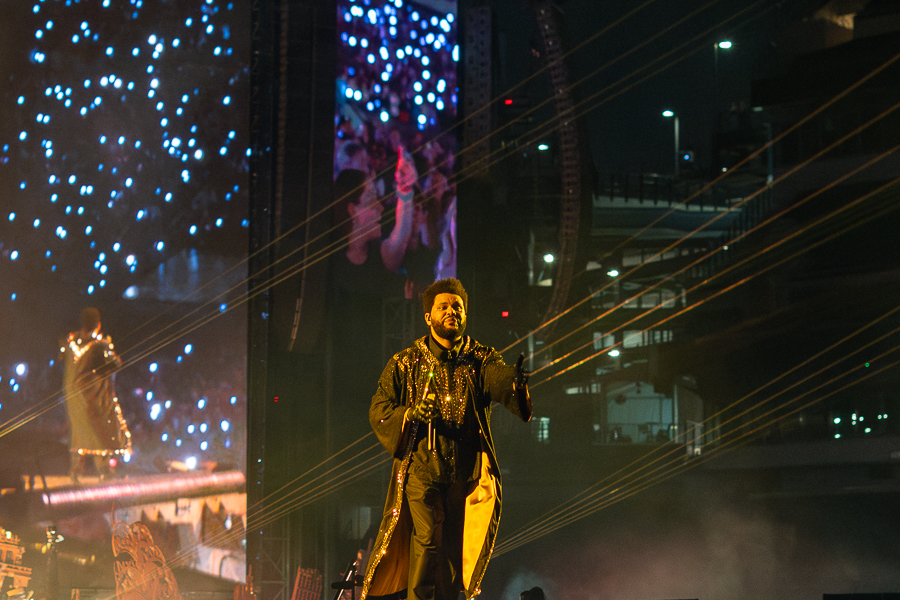
The Weeknd’s genre transcends simple R&B categorisation and often leans on the theatrical elements of pop and rock. During approximately one-third of his concert, he fully embraced the R&B side, showcasing vocal finesse that drew comparisons to Michael Jackson and classic crooners. In tracks like “Out of Time” and “Call Out My Name” from his 2018 EP “My Dear Melancholy,” he showed a vulnerable side that underscored his technical ability.
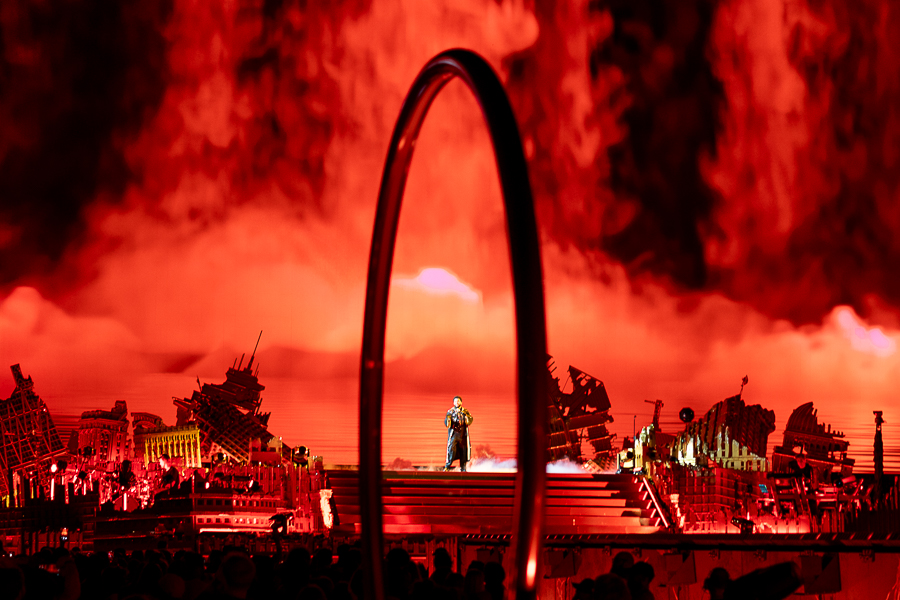
The concert featured repeated references to Philadelphia and the surrounding region, with The Weeknd demonstrating a local connection. During “Die for You” and other songs, he showed his ability to command both the large stadium and create an intimate atmosphere.
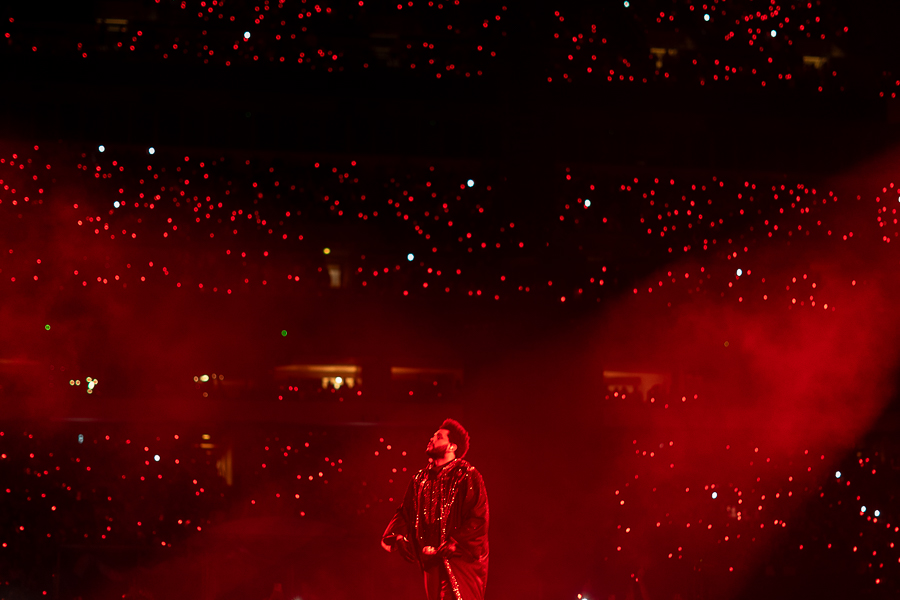
In the final portion of the show, the sound shifted to synth-pop with songs like “Save Your Tears,” “Less Than Zero,” and “Blinding Lights.” The stadium transformed into a dance floor, with R&B romanticism giving way to the pulse of New Romanticism.
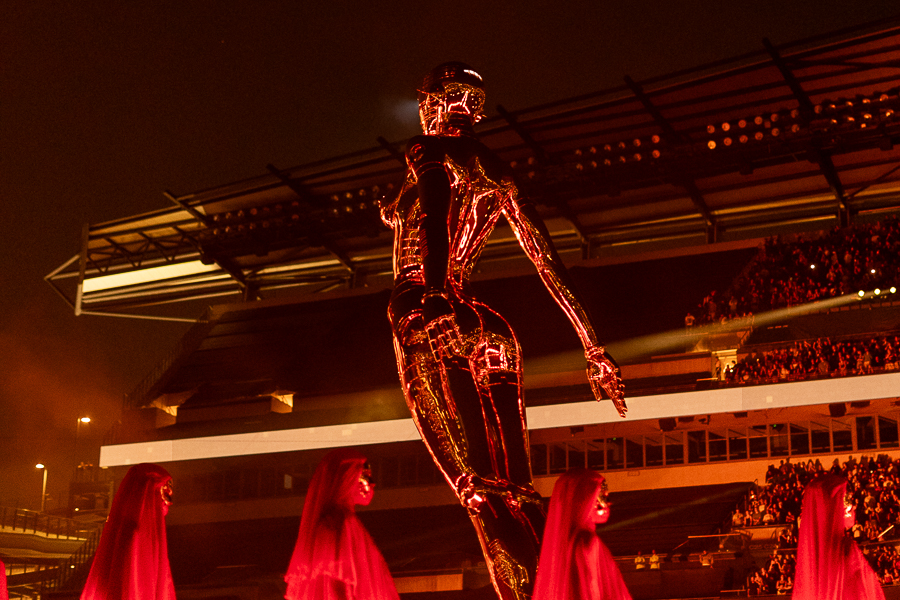
The evening closed with classics “High for This” and “House of Balloons” from his 2012 compilation album “Trilogy,” followed by the explosive “Moth to a Flame,” supported by fireworks. After more than two hours, The Weeknd maintained his vocal quality and effortlessly hit high notes.
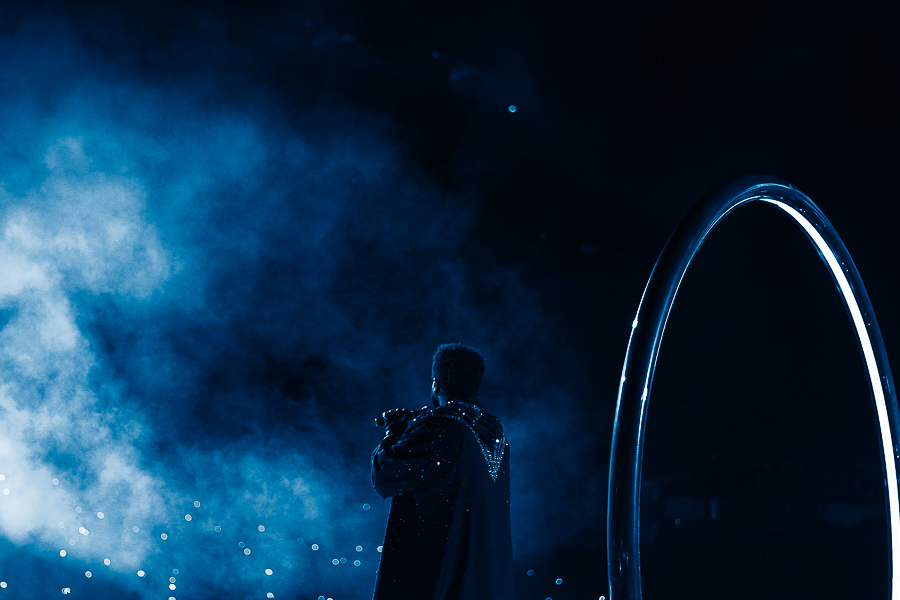
The Philadelphia performance confirmed The Weeknd’s position as an artist who can deliver both technical excellence and emotional connection on a large scale.
Photos (c) Jashton Best/Mirrorflows
